European capitals are some of the most charming and beautiful places to visit in the world. From historic centers to cultural hotspots, you can find top-tier restaurants, incredible museums, and majestic gardens to explore. But the thing is: what about all the other European cities that are just as interesting and stunning? Visiting these cities allows you to know a different and more authentic cultural side of Europe, without having to deal with the typical fuss of big cities. It’s a win-win situation.
We listed 10 top outlying cities around Europe and what makes them special, just for you. Take a look and start planning your next trip.
Évora
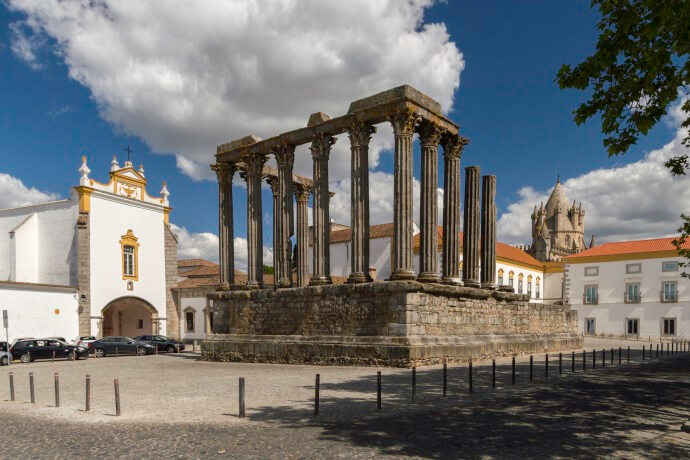
Located in Alentejo, Évora is one of the oldest cities in Portugal. Conquered and occupied by the Romans from 3 BC until 4 AD, this UNESCO World Heritage Site has many stories to tell.
Start at the heart of the city with the Giraldo Square, where you can find the Santo Antão Church and the marble fountain with eight spouts, representing the eight streets that lead to the square. At a walking distance from this point, you may visit different monuments, such as the Temple and the Roman baths, the medieval walls, the imponent granite Cathedral, also called Sé de Évora, built in 1204, the Church of Graça, and the 16th-century Church of São Francisco, with its peculiar Bones Chapel. Be sure to stop at the old University, founded in the 16th century, and wander around the romantic garden where you can find the Palace of D. Manuel, the great sponsor of the Portuguese navigations.
Évora is a great city to explore on foot, so as you walk around the city, you may stop along the way to try some delicious traditional dishes, such as different types of cheese, wheat bread and charcuteries, and some of the best wines in Portugal, locally produced.
Granada
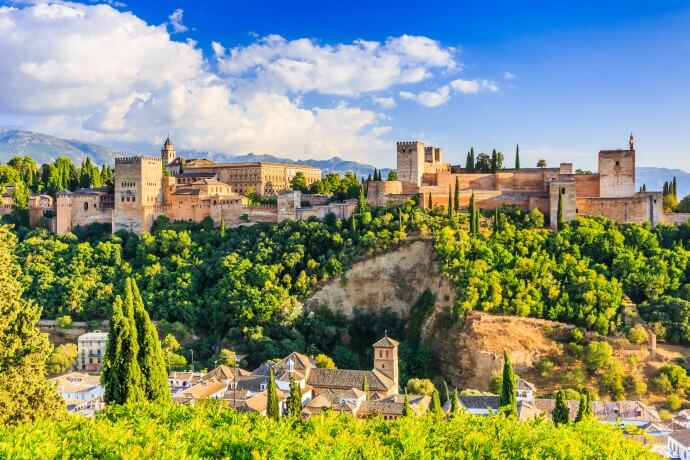
Granada is one of the most emblematic destinations in Andalusia, where you can eat delicious tapas and enjoy the vibrant flamenco. Full of UNESCO World Heritage Sites, Granada combines the best of both worlds, being both cosmopolitan and cultural, with a medieval aura to it.
The well-known World Heritage Site Alhambra is a picturesque and unique monument that represents the largest example of the Moorish legacy in Spain. In the vibrant Albayzín neighborhood, you can soak up the Moorish atmosphere present in the architecture, the labyrinthic streets, and the gastronomy from Northern Africa and the Middle East. Right in the city center, the Alcaiceria market embodies the Grand Bazaar of Istanbul, and there are Arab baths throughout the city that keep a thousand-year-old tradition of the hammam.
Less than one-hour drive away, you can find some unspoiled beaches such as Velilla or El Muerto along the Costa Tropical, also known as the Costa de Granada, and enjoy its translucent waters under the warm sun.
Bologna
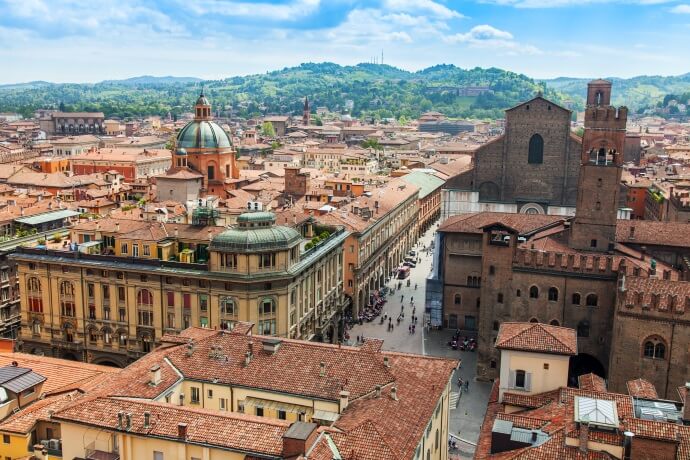
As the capital of the Emilia-Romagna region of Northern Italy, Bologna offers a rich cultural experience and some of the most delicious food you will ever taste.
Wander around the Piazza Maggiore square, the heart of the city, and enjoy the environment that surrounds you. Here you can also visit the Basilica di San Petronio, built in the 14th century, an impressive church that features a mix of Gothic and Renaissance styles. Be sure to also visit the Torre degli Asinelli, built in the 12th century. This tower stands at over 97 meters tall and offers a mesmerizing view over the city. The astonishing Archiginnasio of Bologna, a historic building that was once home to the city's university, houses the Anatomical Theatre, a fascinating architectural masterpiece where medical students once performed dissections. You may also contemplate an impressive collection of Italian Renaissance at the Pinacoteca Nazionale di Bologna Museum.
Make sure to stop at Quadrilatero, where you can find some of the city's best food markets and shops. Here you can sample everything from fresh pasta to traditional charcuterie.
Turin
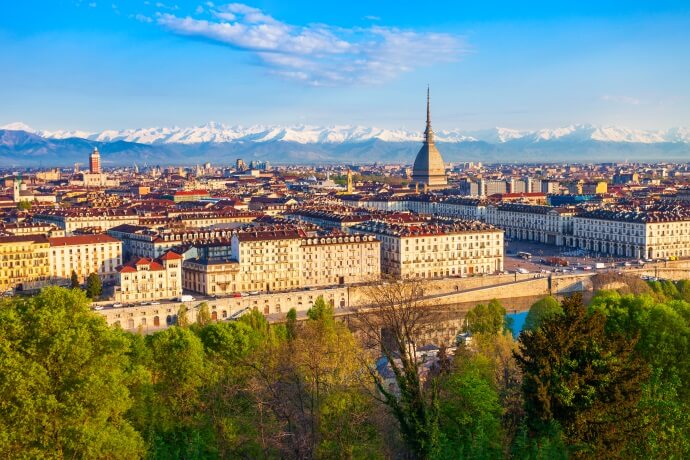
Turin is a city in northern Italy that is full of stunning architecture and delicious food, boasting a rich history and hosting a vibrant nightlife.
Begin you tour at the heart of Turin with a stroll around the Piazza Castello, where Turin's main cathedral, the Duomo, is located. At the Mole Antonelliana, originally a 19th-century synagogue that was later transformed into a museum of cinema, you can take a glass elevator to the top of it to enjoy the beautiful view. Located just outside of Turin, there’s the 17th-century Royal Palace of Venaria, a superb example of Baroque architecture. For another stunning view over the city, make sure to visit the Superga Basilica, a beautiful church built on a hill in the 18th century to commemorate the victory of the Duke of Savoy. Are you a car enthusiast? Then you will want to make a stop at the National Automobile Museum, as it contains over 200 cars and motorcycles, including some of the most iconic vehicles in the Italian automotive history.
Take some time to wander around the historic neighborhood of Quadrilatero Romano, which is full of narrow streets and medieval buildings to explore. To relax and simply soak up the pulsating atmosphere of Turin, you can make a stop at the Valentino Park, located along the Po River.
Salamanca
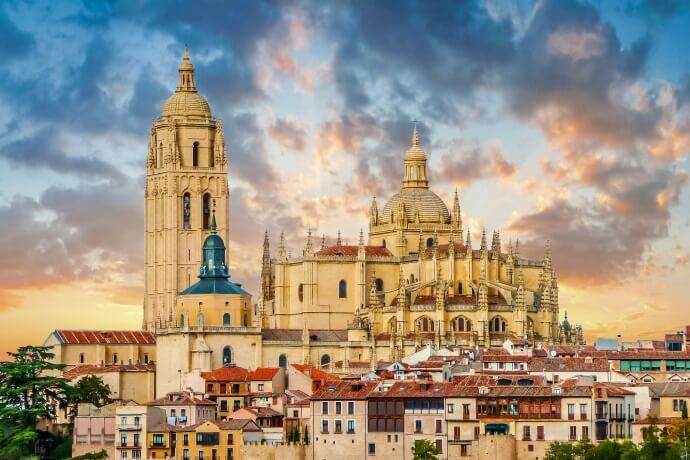
The city of Salamanca, whose historic center is a UNESCO heritage site, is known for its well-preserved center and University which dates back to 1218, the oldest in Spain, and offers a stunning plateresque façade. This city is currently also an important commercial and cultural hub.
The Plaza Mayor is one of the most beautiful squares in all of Spain, and a great place to start your tour: grab a cup of coffee and spend a few hours here enjoying the architecture and shops. The Salamanca Cathedral is a masterpiece of Spanish Gothic architecture, with intricate carvings and stained-glass windows that you cannot miss. The 16th-century Convento de San Esteban is a great example of the Spanish Renaissance architecture, featuring a luxuriously ornate interior and a striking cloister. The perfect spot for taking photos? The Puente Romano. This ancient Roman bridge over the River Tormes is said to date back to the 1st century AD and is one of the oldest and most impressive Roman bridges in Spain. You can also visit Casa Lis, home to the Museum of Art Nouveau and Art Deco, which showcases a stunning collection of decorative arts from the early 20th century.
Braga
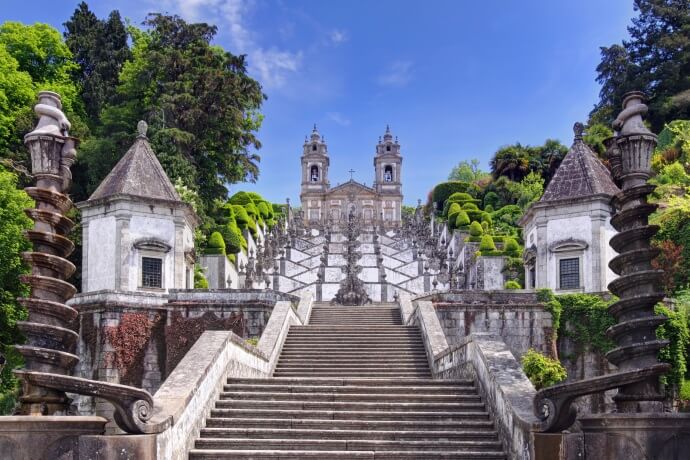
Want to travel back in time? Then Braga is your city. Located in the Northwest of Portugal, visiting it is pretty much like walking into a history book. As an important religious capital, this city has many lovely churches and cathedrals, and there are two beautiful catholic monuments on hill tops surrounded by stunning green scenarios.
Some call Braga the "Portuguese Rome", as it was once the seat of the Roman legal government. Today, it is a lively city with an unbelievably old architectural heritage. Stroll around the sophisticated historic center with its narrow and ancient streets, and get lost in the several Baroque churches that can be found in Portugal's third largest city. Soak up the vibrant atmosphere of this ancient city as you visit the beautiful Jardim de Santa Bárbara, marvel at the Sé de Braga, Portugal's oldest cathedral that is at least a thousand years old, and pass by Bom Jesus do Monte, about five kilometers from the center, for views that will take your breath away. If you have the chance, enjoy Braga after the sun goes down, as it becomes incredibly magical by night.
Bari
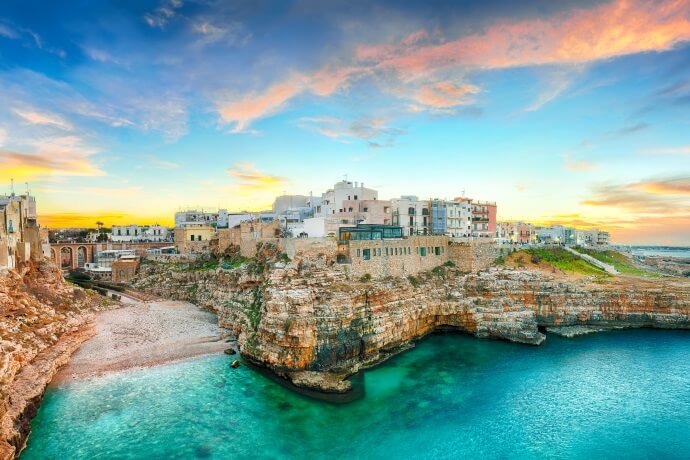
Situated in the southern Italian region of Puglia, Bari is a vibrant city steeped in history and culture.
You can walk around Bari's Old Town’s maze of narrow streets and alleys, enjoying the environment that surrounds you, or grab a cup of coffee by the Piazza del Ferrarese, a lively square in the heart of the city. Nearby, there’s the Bari Cathedral, a beautiful Romanesque church that dates back to the 12th century and where you can get carried away by a stunning view over the city from the bell tower. Take some time to stroll along the Lungomare Nazario Sauro, a picturesque promenade seafront, and to try the local seafood. Make a stop at the Mercato del Pesce, or Fish Market, a lively and colorful market where vendors sell fresh fish, seafood, and other local delicacies.
Located just outside the city center, you can relax at the crystal-clear waters and fine sand of the Pane e Pomodoro Beach.
Bilbao
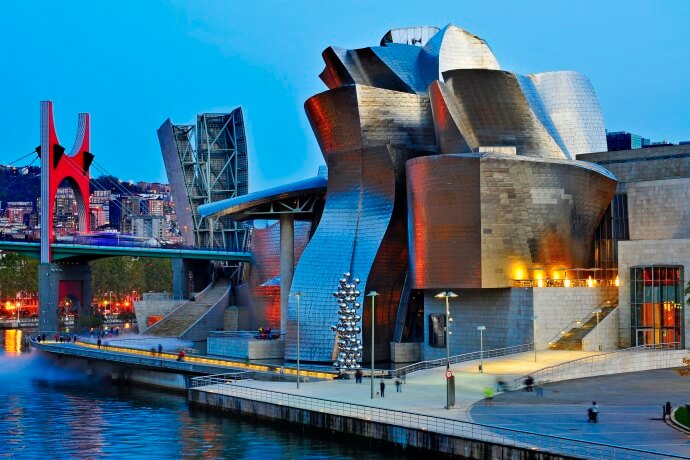
Bilbao is the vibrant capital city of the Basque Country in Spain, where the modern and the traditional walk hand in hand. Surrounded by a vast green region and some lovely beaches, Bilbao grew beyond its rural tradition to become one of the most successful industrial areas in the country, becoming a highly touristic destination.
This city has several remarkable museums, such as the Guggenheim Museum which is a landmark of contemporary architecture, impressive cathedrals, numerous annual art festivals, many important art galleries, and authentic local shops. In the old town, you will come across La Ribera Market, the largest covered market in Europe, built in the Art Deco style.
As for Bilbao's gastronomy, it is just delicious! Vibrant bars and taverns will serve you the best pintxos (Basque tapas). Mostly based on sea and river food, such as bacalao a la vizcaína (codfish in a tomato, bell pepper and garlic sauce), there are also options for those who have a sweet tooth, such as the canutilos (cannoli-like sweets). Make sure you try the fruity chacolí, a white wine that is a trademark of the region.
Coimbra
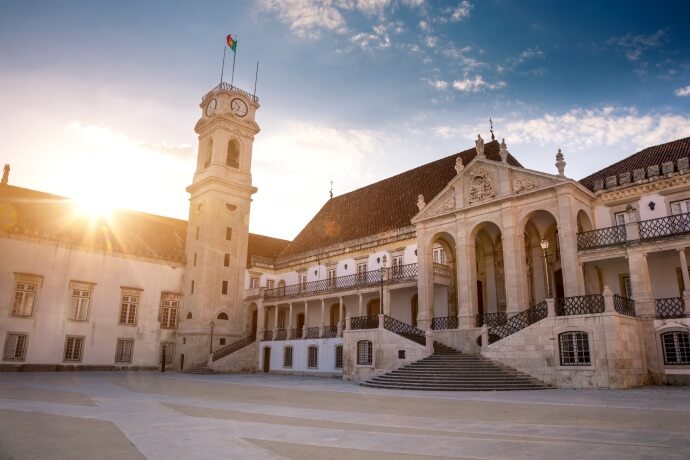
Once the capital city of Portugal in the medieval ages, Coimbra is full of academic traditions and historical heritage. Situated along the Mondego River, this city is characterized by charming riverside houses and lovely alleys. The University of Coimbra, founded in 1290, is one of the oldest in Europe and a World Heritage Site, and there is also a botanical garden where you can take a pleasant stroll. It is frequent to see black cloaked students downtown performing serenades. Within the University halls lies one of the most magnificent Baroque libraries from the 18th century. This city is also known for Fado, a unique Portuguese music, and has developed its own unique style.
Make sure to visit the Santa Cruz Monastery, where the tomb of the first king of Portugal, Afonso Henriques, is located, and take a few moments to sit at the majestic gardens of Quinta das Lágrimas, home to the tragic love tale between Prince Pedro and the maid Inês de Castro.
Verona
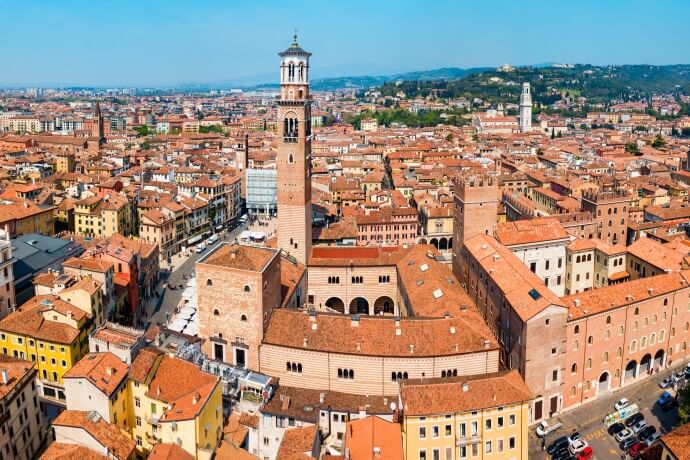
Sited in northern Italy, Verona is a charming and romantic city with a lot to offer its visitors, from stunning architecture to delicious gastronomy.
One of the most iconic landmarks in Verona is the Arena di Verona, a Roman amphitheater built in the first century that is still used to this day for concerts and operas. Make sure to stop at Juliet's House, the supposed home of Shakespeare's tragic heroine, and take a stroll around Verona's historic center, where the Piazza delle Erbe, a lively square that hosts a daily market, is located. Built as a defensive fortress, the Castelvecchio is a stunning medieval castle that dates back to the 14th century, and it is now home to a museum of art and history. You can also visit the Basilica di San Zeno Maggiore, which dates back to the 10th century, and it is simply an absolute masterpiece of Romanesque architecture.
A great example of a splendid Renaissance-style garden is the Giardino Giusti, from the 16th century, a peaceful oasis where you can relax right in the middle of the city. Looking for a stunning view over the Verona's historic center? Then make sure to stop at the Ponte Pietra that spans the Adige River.
Shall we?
Europe has more to it than just its main capitals. From impressive ancient monuments to superb cuisine, you will find vibrant scenarios full of color and history. Many other European cities that are just as magnificent and eye-catching await your visit - allow yourself to get immersed in their bustling culture.



